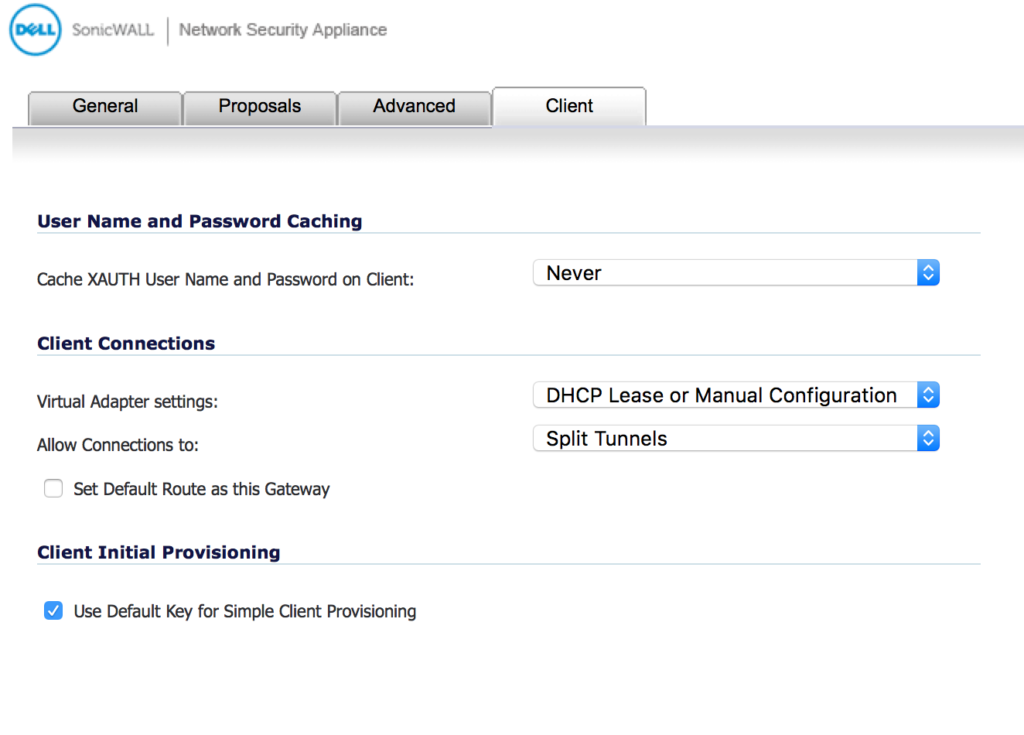

- #Using ipsecuritas with sonicwall install
- #Using ipsecuritas with sonicwall software
- #Using ipsecuritas with sonicwall trial
#Using ipsecuritas with sonicwall install
The install will ask you a few questions about how you want to set it up. If you are using Ubuntu, open a terminal window and type in:
 Enable Perfect Forward Secrecy (checked). Click on the Proposals tab and set the following:. Shared Secret: (enter your secret key here). IPSec Keying Mode: IKE using Preshared Secret. Click on the General tab and set the following:. Under VPN Policies, create or edit the ‘GroupVPN’ policy. Click on the VPN link and note the Unique Firewall Identifier for your SonicWall router. Login to your SonicWall router admin and make the following adjustments to the VPN settings.
Enable Perfect Forward Secrecy (checked). Click on the Proposals tab and set the following:. Shared Secret: (enter your secret key here). IPSec Keying Mode: IKE using Preshared Secret. Click on the General tab and set the following:. Under VPN Policies, create or edit the ‘GroupVPN’ policy. Click on the VPN link and note the Unique Firewall Identifier for your SonicWall router. Login to your SonicWall router admin and make the following adjustments to the VPN settings. 
#Using ipsecuritas with sonicwall trial
After much trial and error, here is how we got the VPN working on Ubuntu Linux using Openswan. The problem, as most Linux users out there already know, is that setting up a VPN connection in Ubuntu Linux is not very easy. Once established, a VPN connection allows access to development servers, remote desktops, and other network resources inside the firewall so you can see why it would be essential for the remote office. What about other operating systems? Our developers often use Ubuntu Linux from home and required a way to VPN into the office. There is a client that can be downloaded from the SonicWall web site. Our SonicWall router makes it easy enough to establish a VPN connection using Windows. Tunneling through the firewall from outside the office was our next requirement for embracing a diverse and distributed remote office.
#Using ipsecuritas with sonicwall software
In addition to developing web-based project management software that is compatible with all three platforms, our designers and developers rely on them inside and outside of the office. We use three different operating systems - Windows, OS X and Linux - on a daily basis. Our most current challenge as a creative and engineering agency is in embracing diversity in platforms and the inevitable shift towards the remote office. Since our humble beginnings in August of 2000, we’ve seen the Internet landscape evolve exponentially in the last nine years. Pelago is a web design and development agency in Santa Barbara, California.
Starting and stopping the VPN connection. I’ve looked through the CLI at the configuration specifically for the VPN and don’t see a reference to disabling/enabling the VPN configuration so perhaps the development is in the works. Disabling the Site-to-Site and saving the configuration results in no change to the tunnel status and upon inspecting the configuration the Enabled checkbox doesn’t toggle to disabled. If you want to see the status from the USG, you can log into the CLI and type the command “show vpn ipsec status” which will indicate if the IPsec tunnel is active.Īnother small issue I’ve noticed is the check box to disable the VPN connection on the USG side doesn’t seem to work. From the SonicWALL side, you will however see the familiar green circle indicating the VPN is live and you will be able to pass traffic over the tunnel. Unfortunately, from the USG GUI there is no indication that the VPN is established. Disable perfect forwarding secrecy and dynamic routing, then save your configuration. Change your Key Exchange Version to IKEv2 with 3DES Encryption SHA1 Hash and Diffie-Hellman Group 2. Plug in your Peer and Local information, along with your Remote Subnets and Pre-Shared Key. This opened all the familiar options that are necessary to get this functional. Under Settings -> Network I chose the Site-to-Site VPN radio button option along with the IPsec VPN Type below. The USG side required a bit more customization away from its defaults to match up with the SonicWALL default proposal. Leave the proposals at their defaults and finally check “Enable Keep Alive” on the Advanced tab. The SonicWALL side was straightforward - configure the primary gateway, shared secrets, and ID’s on the General configuration tab:Ĭonfigure the Local and Remote networks on the Network tab.







 0 kommentar(er)
0 kommentar(er)
